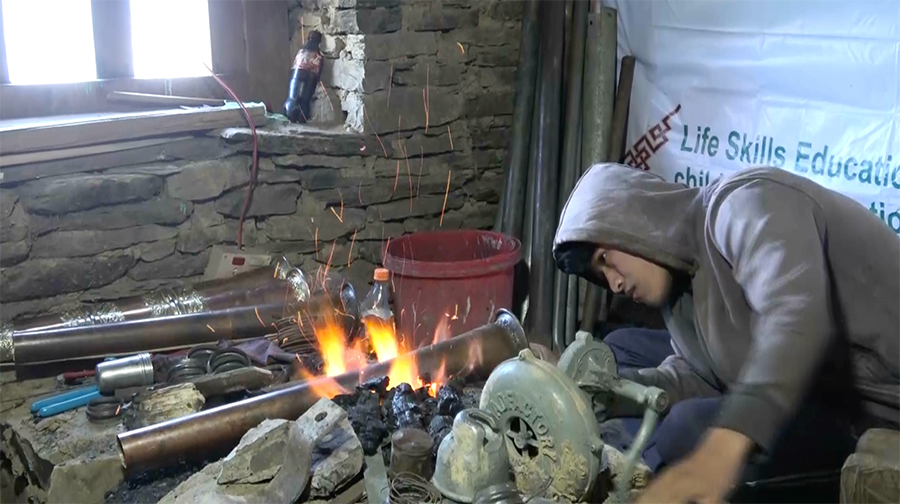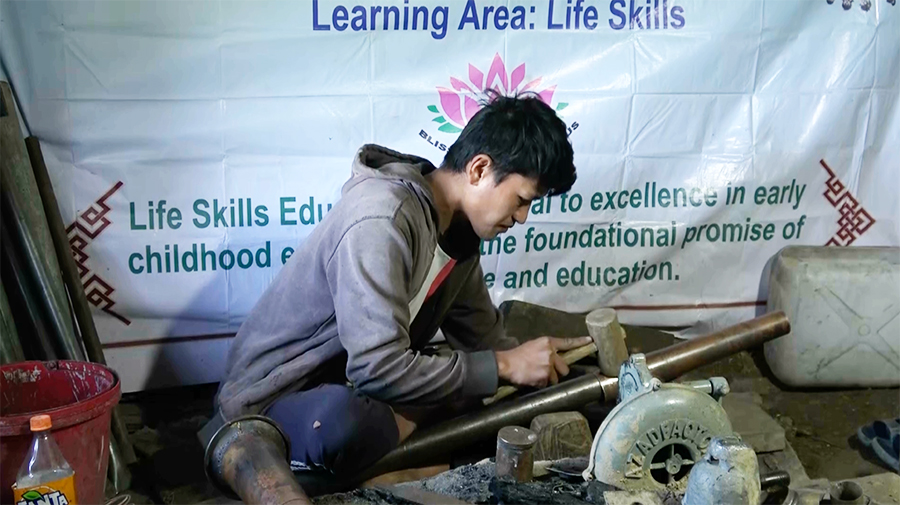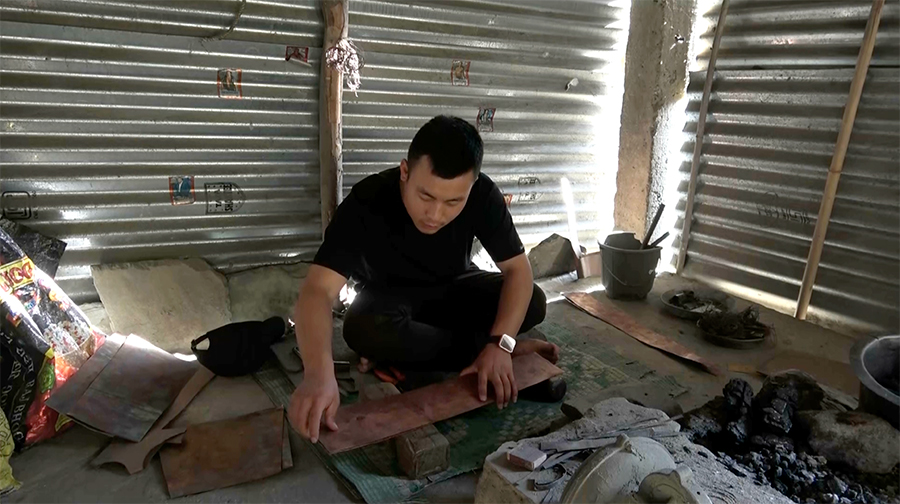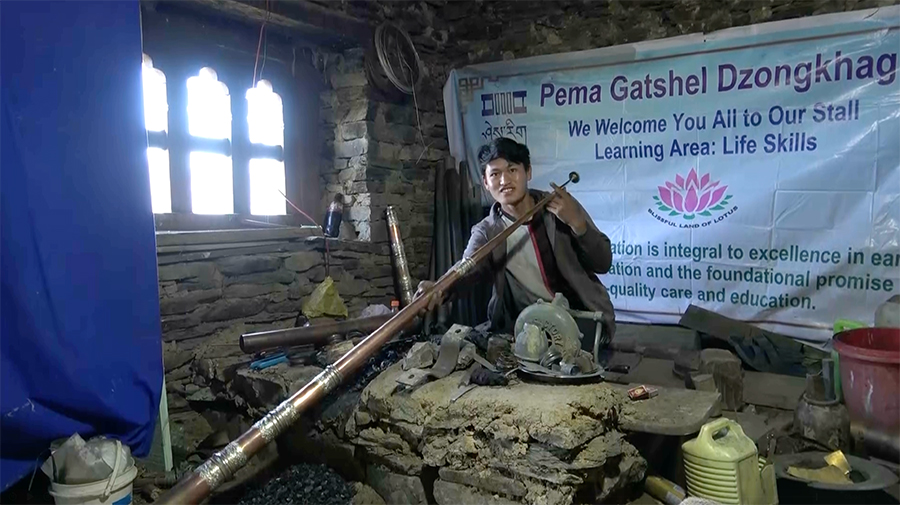
While many youths from the region have moved to urban areas in search of better job opportunities, a few young people have chosen to stay back in Pema Gatshel. Among them is a group of youth dedicated to making Dung and Jaling, which have long been a primary source of income for the local community.
20-year-old Dupden Wangdi is from Mandri Village in Chongshing Gewog. He has been honing his skills in crafting Dung for almost a year now. Once he masters Dung making, he plans to focus on excelling in Jaling making.
 His interest in the craft began when he visited his father’s home on vacation.
His interest in the craft began when he visited his father’s home on vacation.
Since he couldn’t qualify to continue his studies after class 12, he was determined to master the craft and make a living from it.
Dupden Wangdi said, “I saw women working with copper to craft inscriptions and men making Dung and Jaling. I realized this was the primary source of income for many in the village. I became interested in learning the craft and began pursuing it.”
For 19-year-old Dorji Leda from Khar village, his father has been his inspiration. His father, an artisan, has been in the business for decades.
 Dorji Leda remembers helping his father since he was in class 6 though he has not yet fully mastered the craft. He aspires to become a recognized artisan one day.
Dorji Leda remembers helping his father since he was in class 6 though he has not yet fully mastered the craft. He aspires to become a recognized artisan one day.
Dorji Leda said, “I’ve been involved in this work since childhood, so it didn’t take long to learn the basics. It’s a skill I picked up at home and find interesting. Unlike other jobs, I don’t have to endure the scorching sun or get drenched in the rain. I feel fortunate to have learned this craft.”
Two other youths are also mastering the craft. They believe their choice is more fulfilling than conventional office jobs as it offers greater flexibility and the opportunity to earn based on their hard work.
“With this craft, we can earn a decent income, and it also helps preserve our culture. These items are religious objects, so by learning this craft, we’re contributing to preserving our heritage for future generations,” Dupden Wangdi added.
“This work has a good market, allowing us to promote our culture. As religious ornaments, these items carry blessings, which is another reason I chose this path,” said Dorji Leda.
 They produce 5 to 10 pairs of Dung each month while helping their families with farming.
They produce 5 to 10 pairs of Dung each month while helping their families with farming.
Dupden and Dorji’s parents are proud of their children’s decision to pursue this traditional craft.
Dupden’s Father Khandu said, “We don’t always get good jobs with just an education up to Class 12. So, when he showed interest in this craft, I supported him. Now he has learned the skill, and although the income is modest, he is able to help us financially.”
Dorji’s Father Tempa Tashi said, “Even though he earns the equivalent of his daily wages, it has been helpful for us. The money may not be large, but his contributions are important.”
As their dedication to improving their craft is evident, their hope of attending training in the future to further refine their skills, especially in copper inscription reflects their commitment to mastering their art and enhancing their craft
Thinley Dorji, Pema Gatshel
Edited by Sangay Chezom









